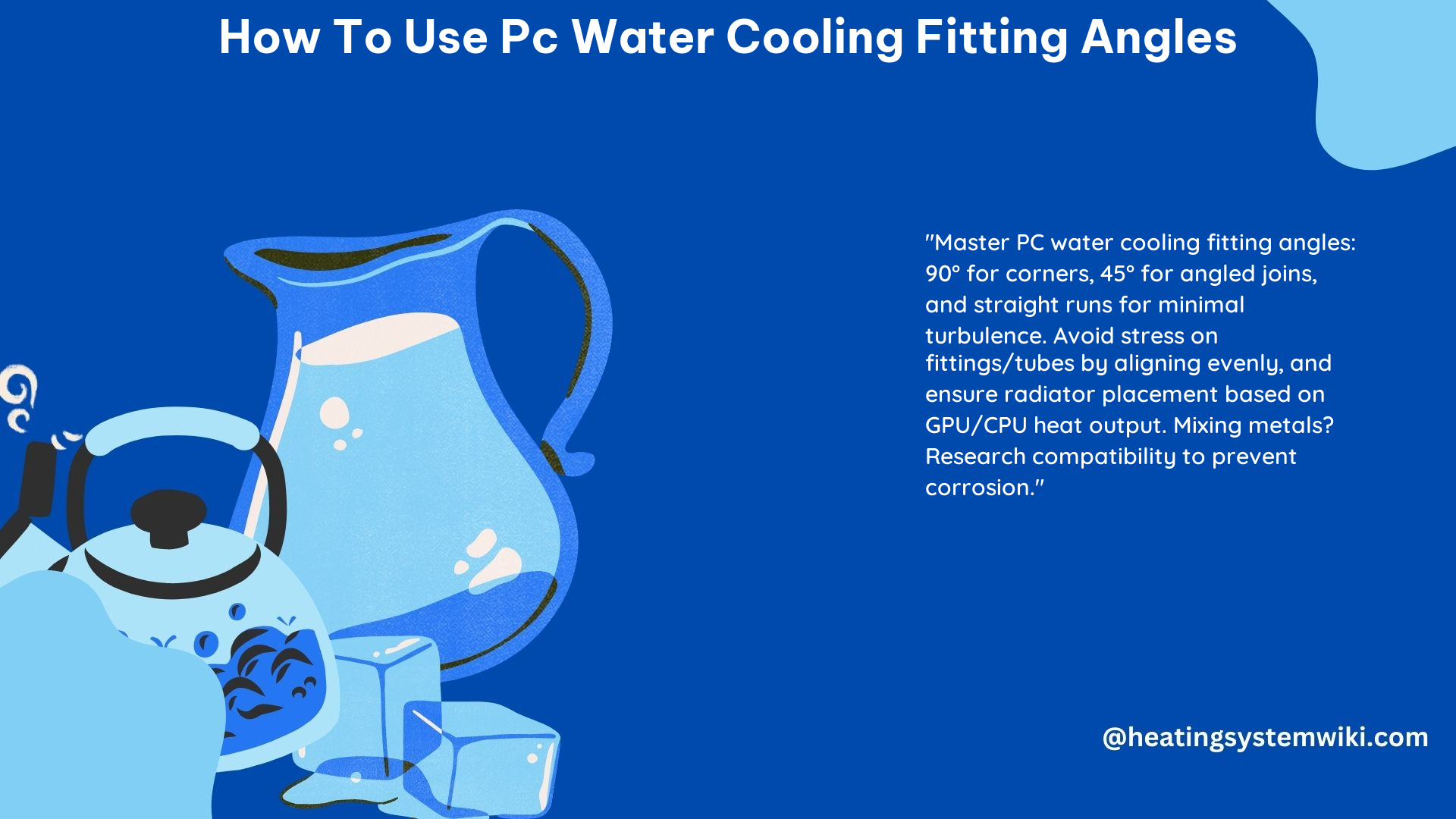When it comes to building a custom water-cooled PC, the proper use of water cooling fitting angles is crucial for achieving optimal performance, reliability, and longevity. This comprehensive guide will delve into the technical details and best practices to help you navigate the intricacies of using PC water cooling fitting angles effectively.
Fitting Compatibility: Ensuring a Seamless Connection
The first step in using PC water cooling fitting angles is to ensure that the fittings you choose are compatible with your tubing material and size. This is essential to prevent leaks, flow restrictions, and potential damage to your components.
- Hardline Tubing: Acrylic or PETG tubing often requires specific fittings, such as compression fittings or push-to-connect fittings, to create a secure and leak-proof connection.
- Soft Tubing: PVC or silicone tubing may use different types of fittings, such as barb fittings or quick-disconnect fittings, which have their own unique installation requirements.
- Fitting Dimensions: Carefully measure the outer diameter (OD) and inner diameter (ID) of your tubing to select the appropriate fitting size, typically ranging from 1/4″ to 1/2″ in common water cooling setups.
- Material Compatibility: Ensure that the fitting material, such as brass, nickel-plated brass, or stainless steel, is compatible with your tubing and other water cooling components to prevent corrosion or chemical reactions.
Angle Considerations: Minimizing Stress and Maximizing Flow

The angle at which you connect your tubing to the fittings can have a significant impact on the performance and longevity of your custom loop. Maintaining the proper angle is crucial to minimize stress on the tubing and fittings.
- Ideal Angle: Aiming for a 90-degree angle between the tubing and the fitting is generally considered the best practice, as it helps to evenly distribute the stress and maintain optimal fluid flow.
- Acceptable Angles: Slight angles, up to 10 degrees, are generally acceptable and may be necessary in some cases to navigate tight spaces or accommodate specific component layouts.
- Avoiding Sharp Angles: Excessive bending or sharp angles, such as those greater than 45 degrees, should be avoided as they can cause kinks, flow restrictions, and increased stress on the tubing and fittings, potentially leading to leaks or premature component failure.
Radiator Placement: Optimizing Cooling Performance
The placement and orientation of your radiators can also impact the effectiveness of your water cooling system, and the use of angled fittings can play a crucial role in this process.
- Radiator Airflow: For optimal cooling performance, radiators should be placed in areas with good airflow, such as the front, top, or rear of the case, to ensure efficient heat dissipation.
- Tube Orientation: Ideally, the tubes should enter the radiator from the bottom, as this can help reduce the formation of air pockets within the system, improving overall cooling efficiency.
- GPU Water Block Recommendations: If your GPU water block has specific recommendations for tube angle or orientation, it is essential to follow those guidelines to ensure proper cooling and component longevity.
Tube Length and Stress: Minimizing Strain on Components
The length of your tubing runs and the number of bends can significantly impact the stress on the components, potentially leading to leaks or damage over time. Angled fittings can help mitigate these issues.
- Tubing Length: Aim for the shortest possible tubing runs to minimize stress and potential leaks, while still allowing for proper component placement and airflow.
- Bend Reduction: Using angled fittings can help reduce the number of bends required in your tubing, which can help to minimize stress and improve overall system performance.
- Bend Radius: When bending tubing, maintain a gentle curve with a minimum bend radius of at least 2-3 times the tubing diameter to avoid kinks or flow restrictions.
Material Compatibility: Preventing Corrosion and Damage
Ensuring the compatibility of materials used in your water cooling system is crucial to prevent corrosion, chemical reactions, and potential damage to your components.
- Mixing Metals: Avoid mixing copper and aluminum components, as this can lead to galvanic corrosion, which can severely damage your system over time.
- Coolant Compatibility: Choose a coolant that is compatible with the materials used in your water cooling components, such as the tubing, fittings, and water blocks, to prevent any adverse reactions.
- Corrosion Inhibitors: Consider using a coolant with corrosion inhibitors or additives to further protect your system from the effects of galvanic corrosion or other chemical reactions.
By following these best practices and understanding the technical specifications of PC water cooling fitting angles, you can create a reliable, efficient, and long-lasting custom water-cooled PC that delivers exceptional cooling performance.
